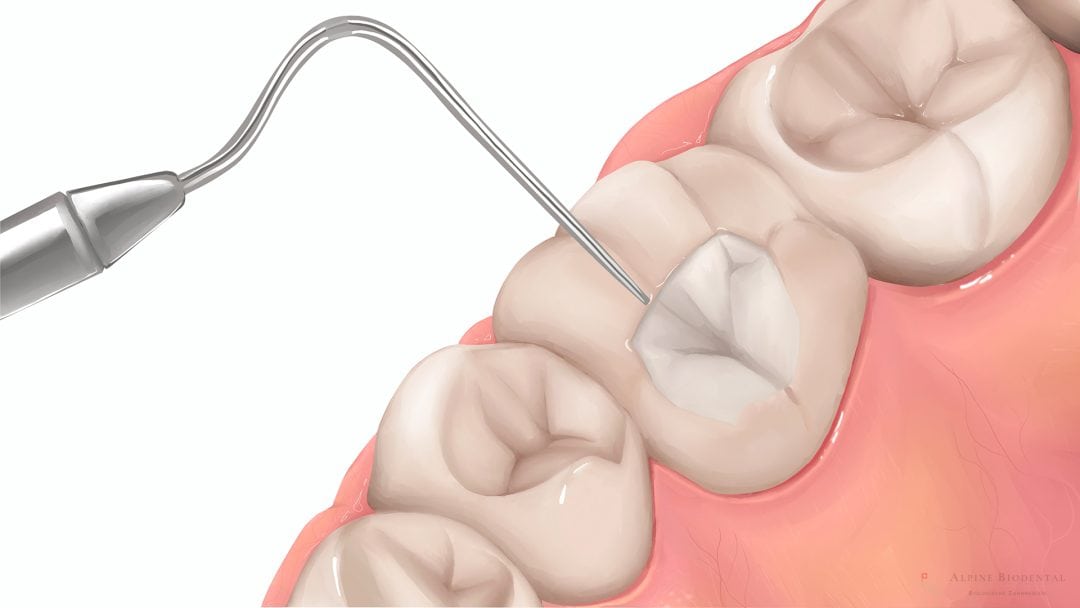Composite Filling

Dental materials should not only exhibit pleasing aesthetics but also demonstrate good biological compatibility. Different monomers and co-monomers can be released from plastics (composites), potentially having toxic effects on the human organism. Therefore, the toxicity and compatibility of materials should always be considered when choosing dental materials.
In our practice, we use Saremco Green Line, a Swiss quality product that is free from BisGMA, BisphenolA, HEMA, TEGDMA, and fluoride. Additionally, Admira Fusion from VOCO is employed, which is a purely ceramic-based plastic.
Furthermore, plastics are applied in small layers and thoroughly cured. This process significantly reduces the concentration of non-crosslinked monomers.
Dental Plastics – Are Plastic Fillings Toxic?
Concerning the toxicity of plastics, attention should be paid to both the product’s composition and proper handling. Generally, plastics in the mouth always pose some burden and, if possible, should be replaced with ceramic fillings.
Complex Composition
Most fillings nowadays are made from dental plastics (composites), consisting of a large number of different chemical substances that can be toxic, allergenic, and even mutagenic. Some of the harmful substances in composites include:
- Triethylene glycol dimethacrylate (TEGDMA)
- Hydroxyethyl methacrylate (HEMA)
- Urethane dimethacrylate (UDMA)
- Bisphenol glycidyl (di)-methacrylate (Bis-GMA)
Various Symptoms
Due to the high complexity of these materials, the patient’s symptoms can vary widely. These symptoms may include:
- Headaches
- Concentration disorders
- Energy deficits
- Skin irritations
- Joint complaints
The extent of symptoms depends on factors such as:
- Degree of curing of the filling
- Composite used
- Patient's immune status/detoxification ability
Curing of Fillings
Dental plastics are in a pliable state when applied to the tooth. Special UV lamps are used to crosslink the pliable monomers, transforming them into polymers. Dr. Just Neiss, a dentist from Heidelberg, extensively researched dental plastic fillings and found that almost all placed fillings are under-cured, meaning they have a low degree of polymerization. Insufficient crosslinking/polymerization leads to the retention of reactive monomers, including co-monomers, which can consequently enter the living body. This significantly increases the health burden. Therefore, a high degree of polymerization is a crucial factor for biocompatibility.
In addition to thorough curing of the plastics, attention should also be paid to the product itself. Many composites contain TEGDMA, HEMA, UDMA, and BIS-GMA, which are highly reactive and toxic substances that ideally should not be present from a health perspective.
Conclusion
Composites contain harmful chemical substances that can cause various health issues. The individual burden on the organism depends on the material used and, especially, its processing. Maximum curing can transform the used material into a biocompatible state.
Dr. med. dent. Tobias Steinherr M. Sc.
While plastic fillings are acceptable for small tooth defects, ceramic fillings should be chosen for larger defects.

Further information
The listed information covers relevant topics to provide a better understanding: